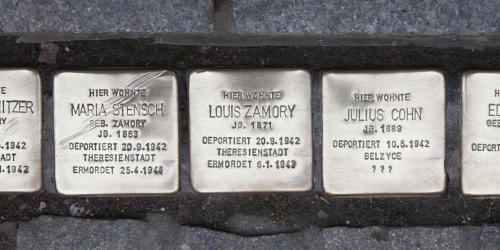
Stolpersteine
On the Stolperstein the victim gets his name back, each victim gets his own stone - his identity and his fate are, as far as known, readable. Through the memorial stone in front of his house, the memory of this person is brought into our everyday life. Each personal stone also symbolizes the totality of the victims, because it is not possible to lay all the stones that are actually necessary. (Gunter Demnig)
Since 2007, "Stolpersteine" (stumbling stones) in Jena commemorate women, men and children who once lived in our city and who were victims of the Nazi tyranny.
The stones were laid by the Cologne sculptor Gunter Demnig, who has so far laid more than 70,000 Stolpersteine in over 1,200 German communities and 21 European countries. has set. Indelibly engraved on the brass plates are the names and dates of people who died during the time of National Socialism. The Stolpersteine are commemorations of people who lost their lives because of their origin or religion, a physical or mental disability, their sexual orientation or because of their political views.
So far 41 Stolpersteine have been laid in Jena to keep alive the memory of those persecuted. With the support of the city of Jena and numerous private donors, the stones for the Jewish victims were initiated by the Jena Jewish Working Group. Other Jena initiatives are also involved. Every year on November 9, the Stolpersteine are cleaned and decorated with flowers and candles. With the "Sound of the Stumbling Stones", small concerts at the locations of the Stumbling Stones, a special form of commemoration has been cultivated since 2017.
